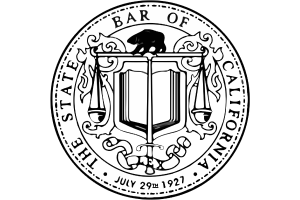- Free Consultation: 866-695-6714 Tap Here To Call Us
SB 775 Explained

SB 775 is a bill signed into law on October 5, 2021, and reforms SB 1437 laws about the conviction of aiders and abettors for murder. Inmates with murder convictions under the previous laws could be charged with murder even though they had nothing to do with it.
Bill 775 allows a defendant convicted of murder, manslaughter, or attempted murder to appeal for resentencing.
The Impact of SB 775
The bill allows a defendant charged with murder, but did not aid or abet in the crime, to petition the court for a resentencing.
It reforms the Felony Murder Rule that allows District Attorneys to charge all individuals with murder if a death took place while another felony was being committed – despite the minimal involvement of others.
Why is this important? Because charging an individual with first-degree murder is not an act of justice if they did not intend to kill or had nothing to do with it.
A Hypothetical Example of How the Old California Law Works
Suppose Albert and John robbed a Walmart store. John uses a gun to intimidate the store employees while forcing them to place items in the bag. One employee tries to wrestle the gun away from John. During the ensuing struggle, the employee is shot and killed.
If the old California law was applied, both Albert and John would be charged with murder and face life in prison. But how does it make sense to charge Albert with murder if he did not even possess a weapon?
This act of injustice is being reformed by bill 775 in an effort to course-correct the criminal justice system, requiring prosecutors to consider mitigating circumstances carefully.
How SB 775 Makes Modifications to the Criminal Justice System?
SB 775 expands upon SB 1437, making it applicable to crimes of manslaughter and attempted murder, as well any murder based on that person’s involvement in the felony, as well as both first- and second-degree murders.
People whose non-final cases fall under the modifications proposed by SB 775 could file petitions to reduce their sentencing.
Furthermore, SB 775 will expand eligibility for resentencing and recall to include convicts found guilty of all murders based on participation, as well as attempted murder and manslaughter convictions that were made under the natural and probable consequences doctrine of liability or theory of felony murder.
In other words, people will be eligible for resentencing if:
- The person was convicted of murder, manslaughter, or attempted murder solely because they participated in a felony
- The person was not the true killer (i.e. did not pull the trigger or drive the knife into the victim), did not have the deliberate intent to kill an individual, and was not a ‘major participant’ in the crime, among others
Various factors are considered when deciding if a person was a major participant in a murder, including:
- The role of the person in planning the activity that resulted in death or attempted death
- The role of the person in supplying lethal weapons
- Whether the person was present at the scene where the victim was killed, whether they were in a position to prevent the death or attempted death, and if their actions may have influenced the death
- The defendant’s response after the use of lethal force
- If the prosecutor fails to prove guilt beyond a reasonable doubt, then the defendant is entitled to be resentenced
What is the Difference Between SB 775 and SB 1437
SB 1437 was passed to prevent District Attorneys from applying first or second-degree murder sentences for felony murder if the person accused wasn’t the actual killer.
The major difference between both bills is that SB 1437 only applied to murder, while SB 775 also applies to persons convicted of attempted murder and manslaughter. This process requires a careful understanding of both bills to secure resentencing.
Contact our criminal appeals lawyer in California at Justice-Firm for a detailed case evaluation and more information on how SB 775 could provide you or someone you love with relief. Individuals will have to provide facts and legal arguments, along with new pieces of evidence in their petition.









